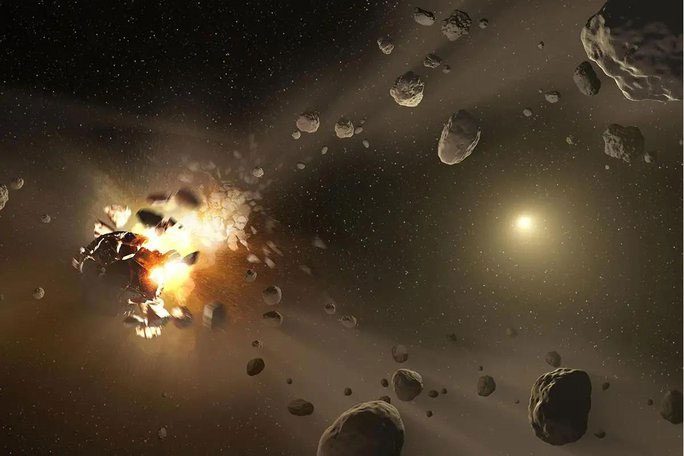An astonishing life-reactor has been identified through experiments on rare carbonaceous chondrite meteorites.
For a long time, there has been a hypothesis that Earth was seeded with life from the cosmos, via comets and meteorites carrying “building blocks of life.” However, what has “breathed soul” into those primordial organic molecules remains a significant mystery.
According to Live Science, a new study now indicates that a specific type of rare meteorite itself possesses that precious catalyst.

The ancient solar system’s carbonaceous chondrite meteorites carry enough elements to spark life – (Illustrative image from NEW SCIENTIST)
The research conducted by a team from Yokohama National University, Kobe University, and the Tokyo Institute of Technology (Japan) focused on carbonaceous chondrite meteorites – a type of pristine space rock that humanity occasionally collects.
Carbonaceous chondrite meteorites have long been proven to contain water and the building blocks of life in the form of primordial organic compounds, which, if they fortuitously landed on a planet like Earth, could be the origin of oceans and life.
However, many experiments aimed at transforming these initial organic compounds into something that could be called true life have failed. To truly generate life, there is something unknown that has activated these primordial materials into a reaction that produces life.
The study published in the journal ASC Central Science indicates that it is the radiation available within this group of precious meteorites.
In the experiment, Japanese scientists mixed ammonia, methanol, and formaldehyde – materials that describe the composition of carbonaceous chondrite meteorites – and then irradiated them with gamma rays from cobalt-60 isotopes, which is equivalent to aluminum-26 isotopes that produce gamma rays in actual carbonaceous chondrite meteorites.
They observed a dramatic increase in the production of amino acids in the irradiated test tubes, reaching levels similar to those found in the Murchison meteorite that landed in Australia in 1969, a carbonaceous chondrite particularly rich in amino acids.
Although amino acids still have a long way to go before they can become life – like us – this research has opened the first door to that mysterious mechanism.
Scientists note that there are still several ways in which amino acids could have been produced under the conditions of meteorites and the early Earth 4.6 billion years ago. Further experiments need to explore more methods of amino acid production to identify the most viable options.



















































